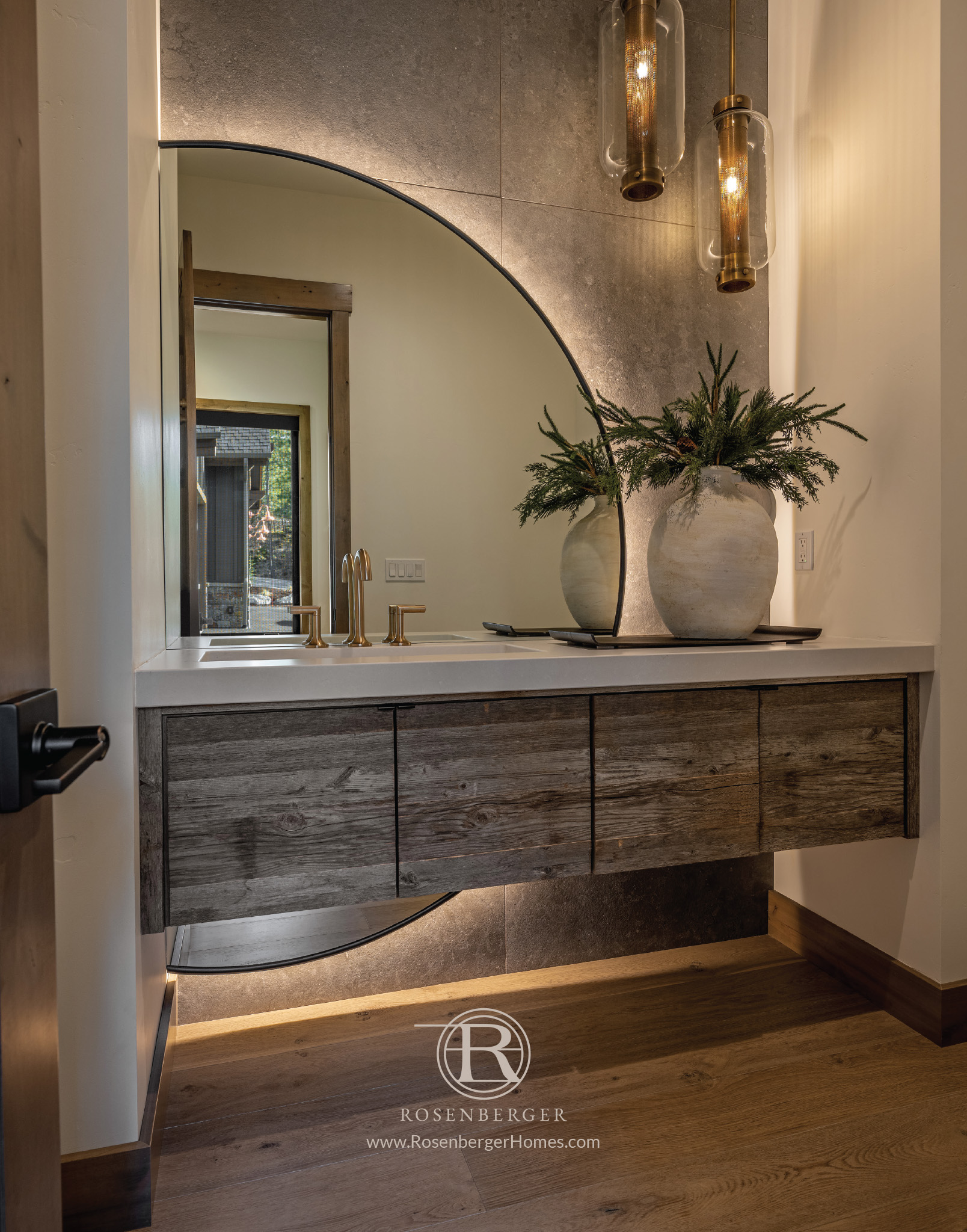The Dolomite Mountains of northeast Italy are quite possibly the most beautiful mountains on earth. The light-colored limestone formation of these dramatic vertical peaks in contrast with the vivid colors of the sky, snow, grasses and flowers surrounding them are truly awe-inspiring. A skier’s paradise in winter and a mecca for hikers in the summer, a trip to the rugged crags, pristine lakes and high alpine meadows of the Dolomites will be in your heart forever and will leave you begging to return. They are also a UNESCO World Heritage site recognized for their outstanding Universal Value.
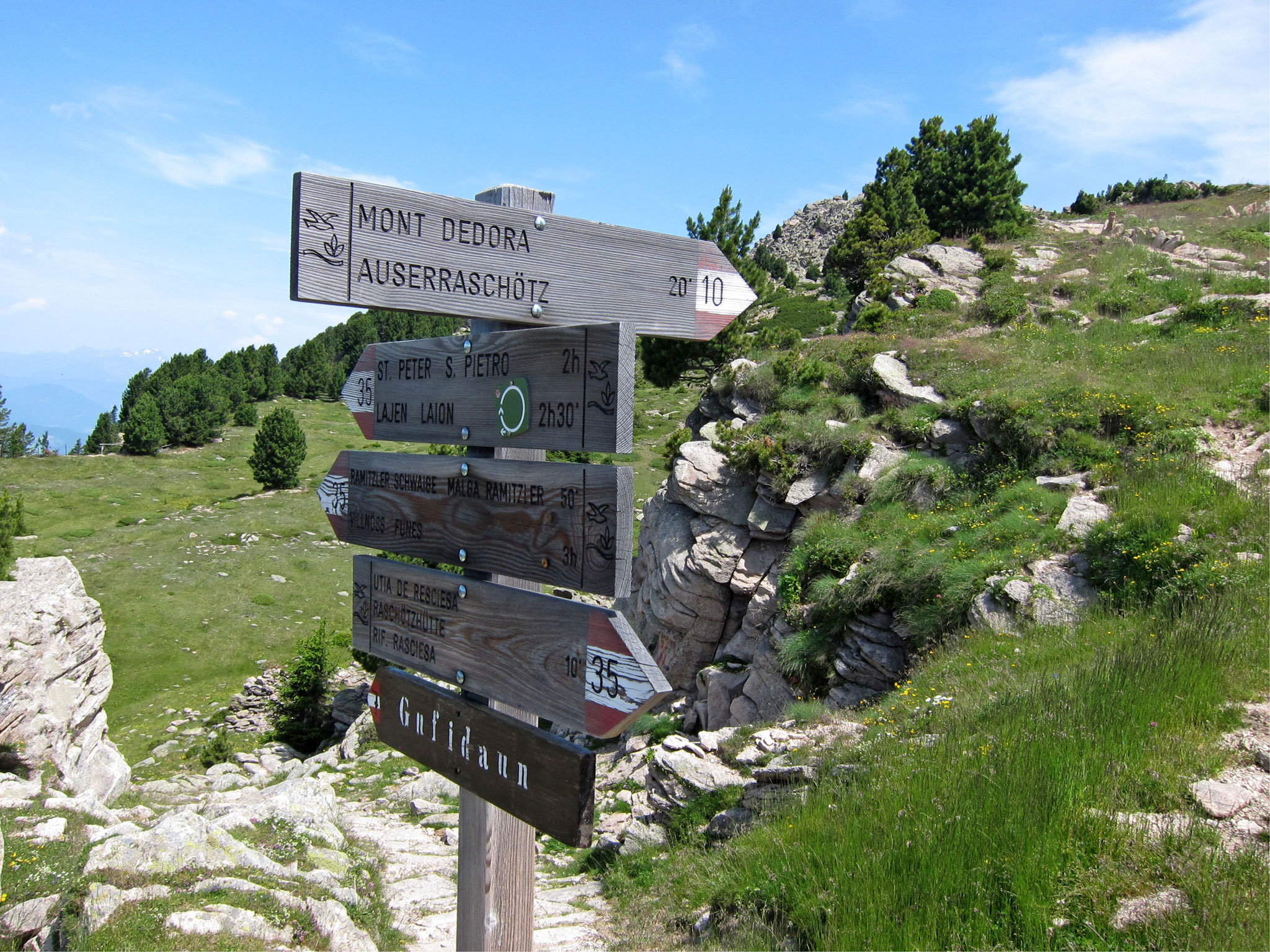
We traveled to South Tyrol, where the region’s Austrian history is still evident as locals speak both German and Italian. For this reason, signs are posted in both languages and towns and landmarks are known by both their Italian and German names. In some places, such as the Val Gardena, the ancient Ladin language is spoken as well. There, it is not uncommon to see three languages on posted roadway and wayfinding signs.
The Dolomites are accessible from Munich and Venice, but we tend to fly in and out of Munich when visiting the region.
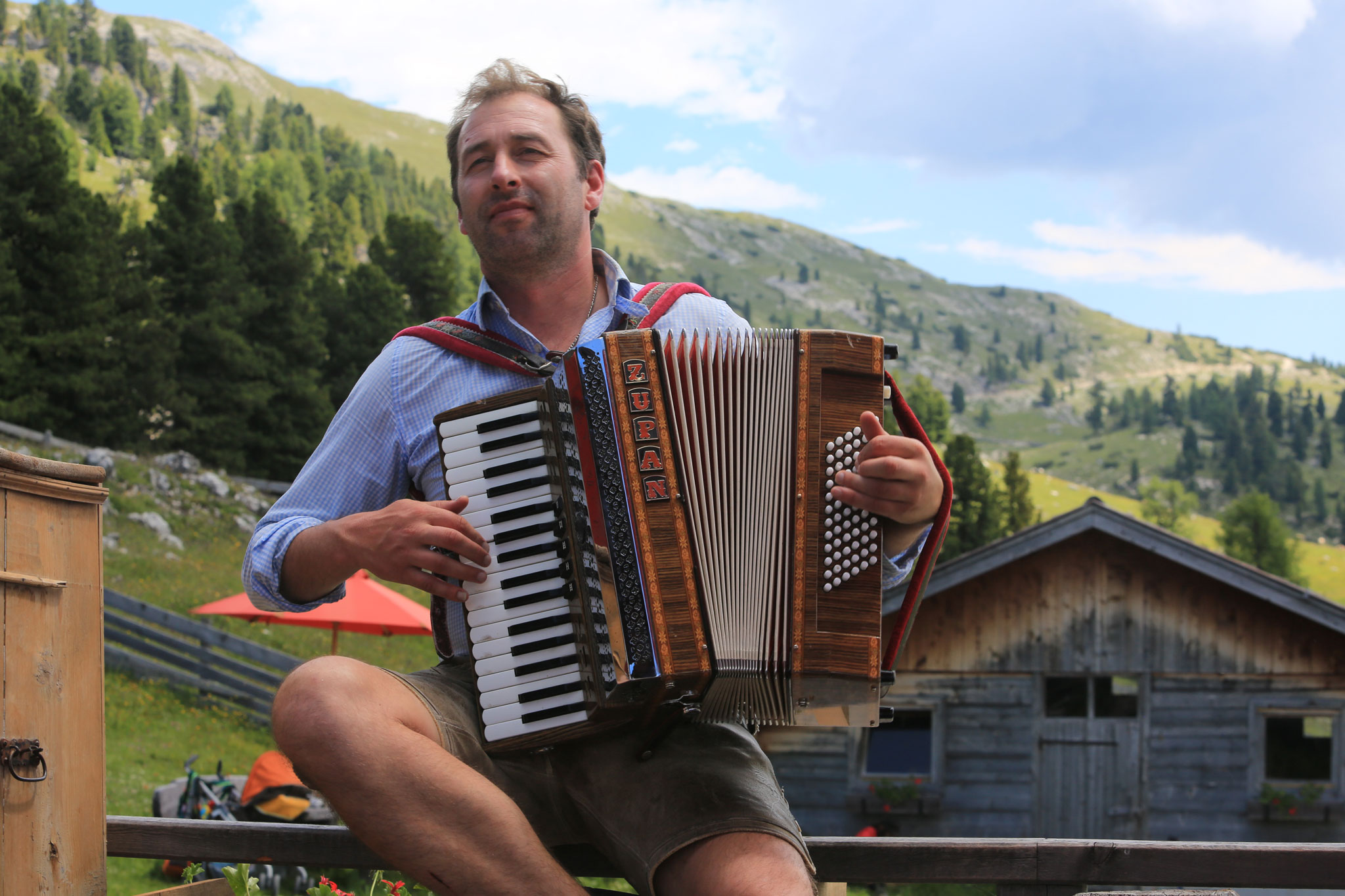
Our trip began in Munich, where we enjoyed a brief stop at the Viktualienmarkt, the open air market in the Marienplatz, the city’s main square. Our eyes feasted on the fresh bounty of goods the market offered while the familiar sound of the chimes of the Glockenspiel at the Rathaus reminded us we were back in Munich. Zipping around the city on the S-Bahn and U-Bahn, we managed to make the most of our day in Munich. We snuck in a walk through Englischer Garten Park to take in the beer houses, concerts, sunbathers and the surfers riding the artificial wave on the Eisbach River.
The next morning, we boarded our train at the Hauptbahnhof and headed south to our destination, Dobbiaco/Toblach. Arriving in Dobbiaco, we were greeted by our friends the innkeepers who have hosted members of our family for decades at their expertly run mountainside villa.
No trip to Dobbiaco would be complete without at least one day of hiking around the crown jewel of the Dolomites, Tre Cime de Lavarado/ Drei Zinnen.
World famous, these remarkable crags with their sheer rock faces rise straight up from the mountain to greet the sky.
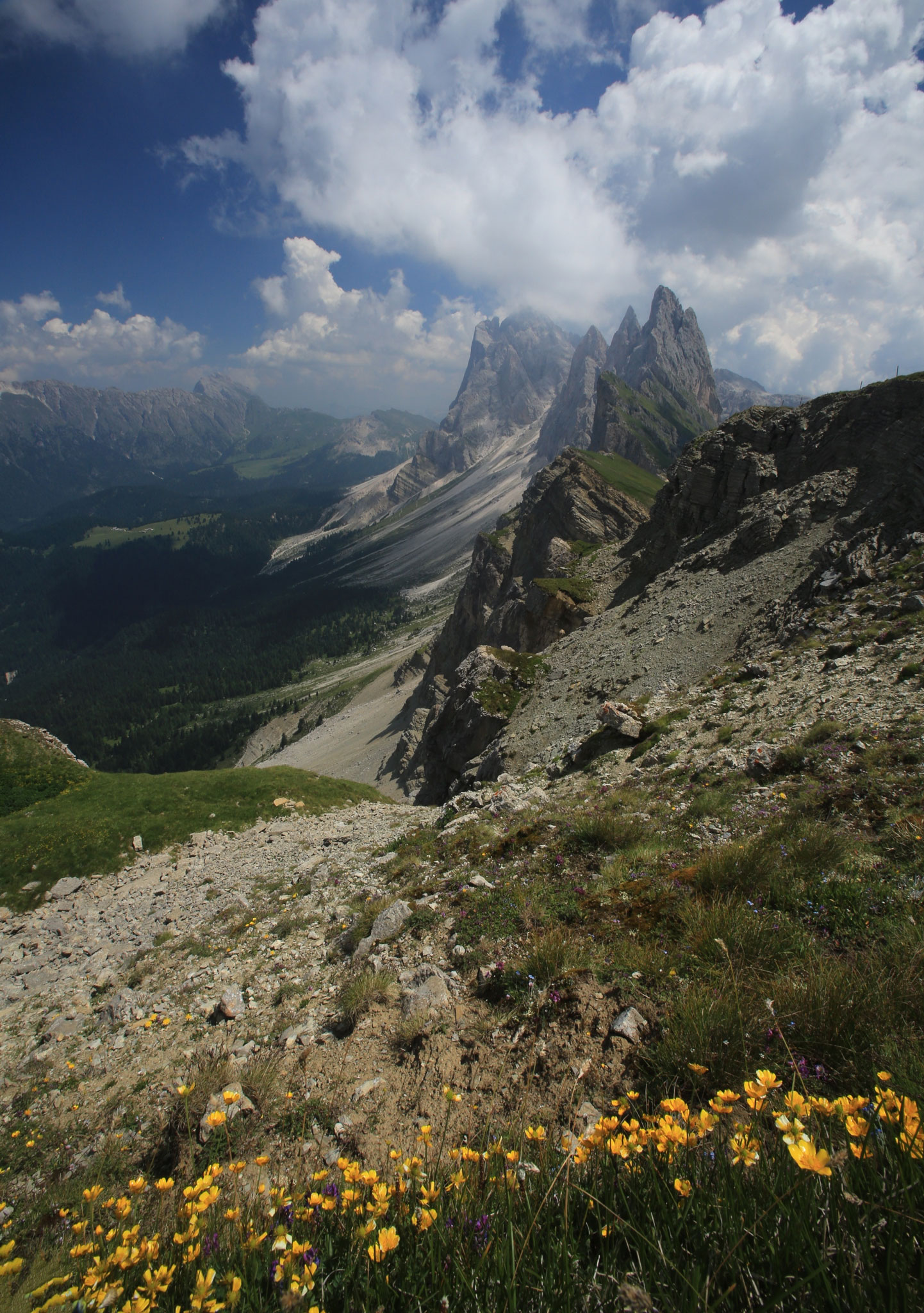
The light color of the rock formation makes them even more impressive in contrast to the deep and rich colors of the sky, snow, flowers, and grasses. We hiked all day around the Tre Cime, trekking through snow patches, traversing rock faces, watching thrill-seekers on the via ferrata routes, and traveling hut to hut along the superhighway of mountain trails. We visited with hikers from all around the world who, like us, were enjoying the day and marveling at the beauty. We replenished our bodies with a cold Radler or Weissebier and hot cup of soup at the Dreizinnenhütte and patroned other huts along the trail. We hiked in a loop around the Tre Cime that day and admired the majestic formation from every angle, walking past alpine lakes, multiple alms (alpine pastures), and enjoying the delicate wildflowers that were in prolific bloom.
Story continues after a quick message from our sponsor below.
Back at the inn, we were greeted by our hosts with an aperitif and fresh baked goods. We were hardly roughing it, but we did put in an honest day’s hike. Thankfully, we did burn calories each day in the mountains. And we needed to because dinners were a multi-course taste extravaganza presented by a professional wait staff that have proudly served guests at this inn for decades.
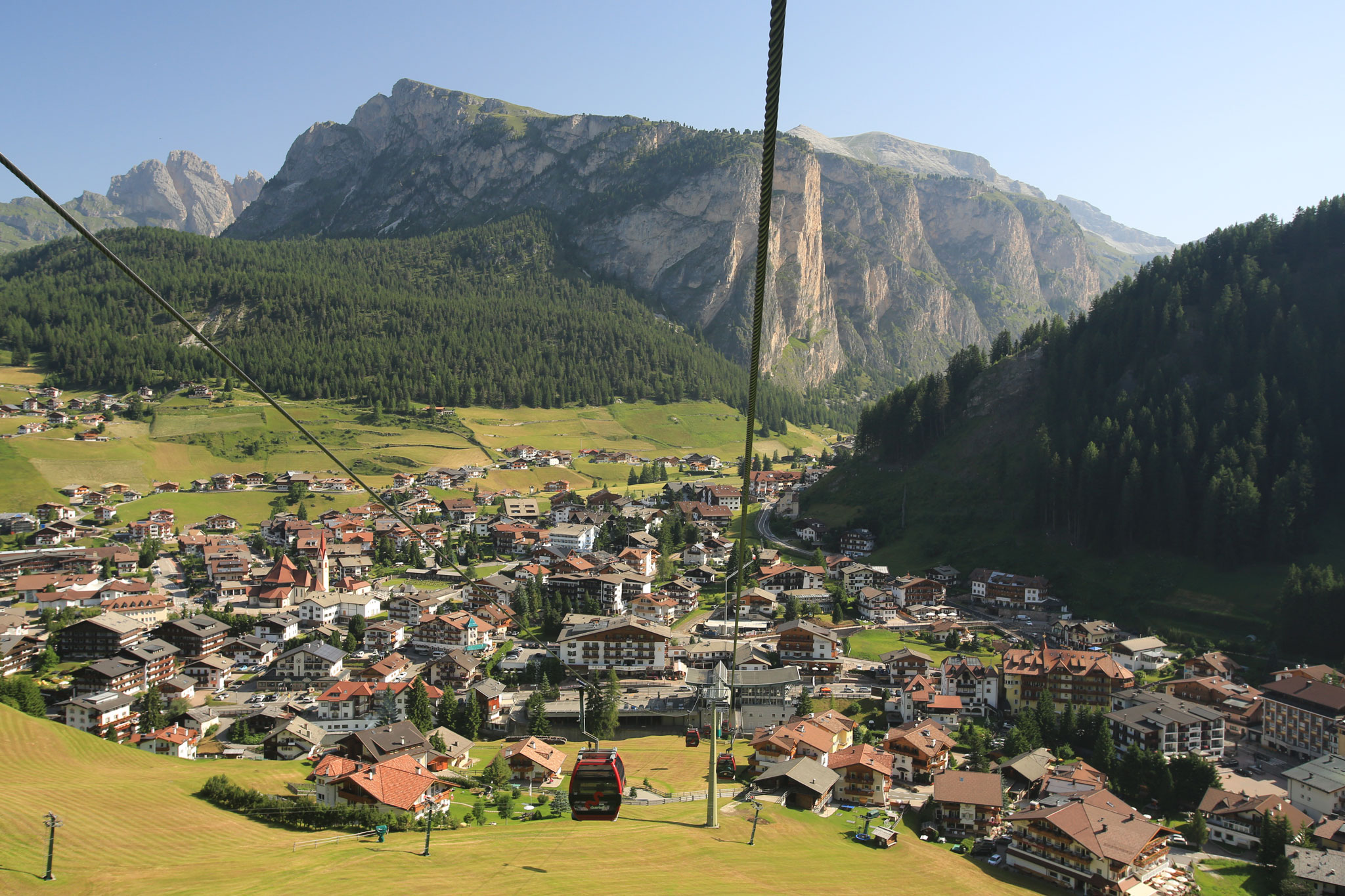
Breakfast, too, was a high-caloric culinary affair. A buffet of farm fresh yogurt, eggs made to order, local meats and fresh bread and cheeses, fruits and muesli were among the offerings aimed to fuel us for the day’s exploits. The next three days were spent hiking in different areas, getting to and from the trailheads by bus. We took in the breathtaking, panoramic views from the Monte Piana above Lake Misurina, where an open air WWI memorial complete with trenches, tunnels, and emplacements is located. Fourteen thousand soldiers died in battle from 1915-1917 at this rugged post in the Dolomite Mountains at Monte Piana.
We hiked near the Croda Rossa, a dramatic 3,148 m (10328 ft) massif of distinctive red rock. Each day on our mountain walks we would delight in the colorful array of wildflowers, the sounds of bells clanking around the necks of cows grazing in the meadows and the taste of the fresh mountain water flowing from the snowfields to the wooden water fountains that we used to fill our bottles.
Our last evening in Dobiacco, while sipping local wine on the inn’s veranda, we witnessed the most amazing full moon rising. We watched as the moon rose up, up, up until it appeared to be resting perfectly in the mountain’s saddle. Later, when we reviewed the photos of this glorious sight, the camera’s zoom revealed a wooden cross at the mountain top illuminated by the moon.
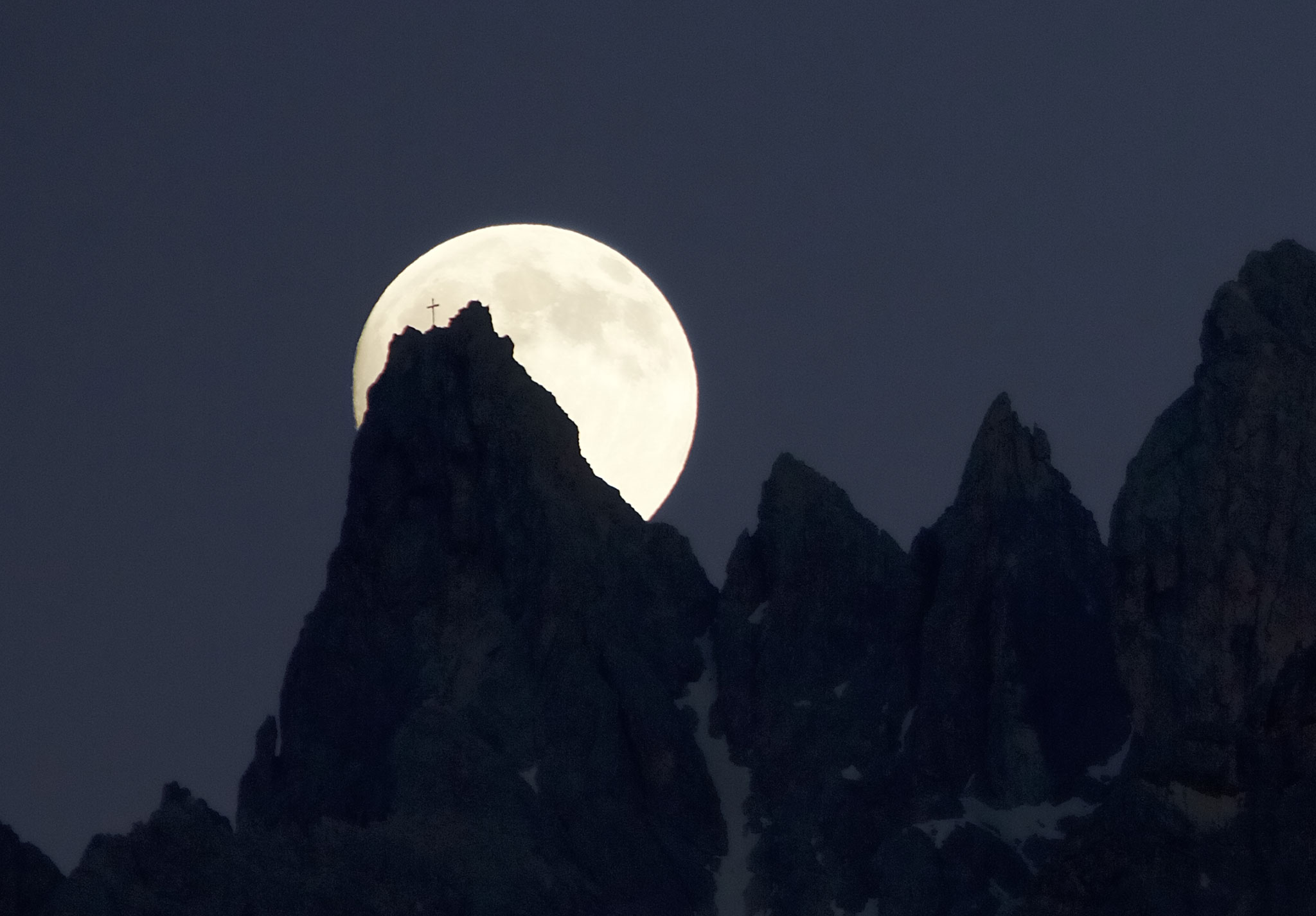
WE WATCHED AS THE MOON ROSE UP, UP, UP UNTIL IT APPEARED TO BE RESTING PERFECTLY IN THE MOUNTAIN’S SADDLE.
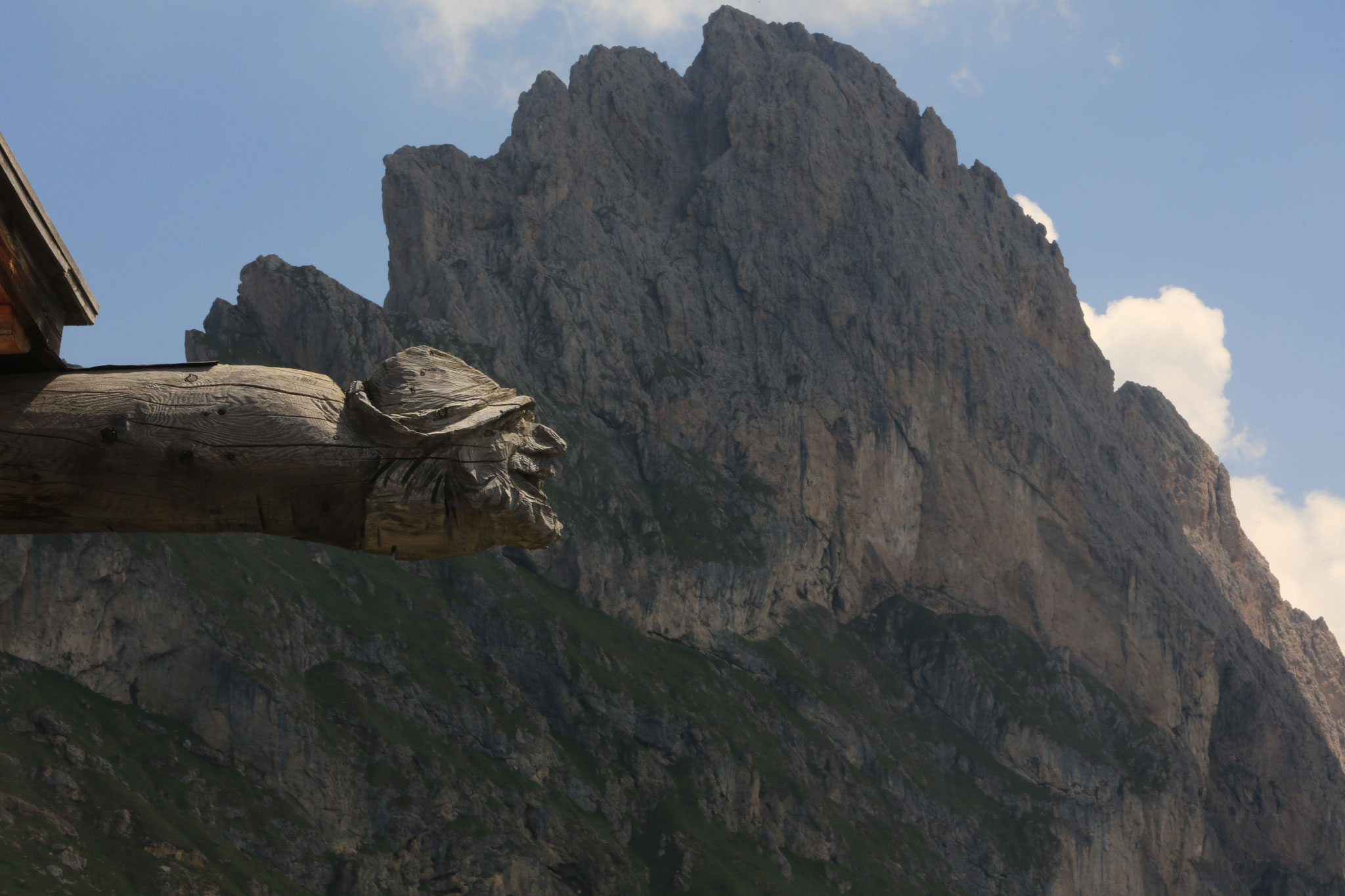
We bade the innkeepers adieu and set out for the Sëlva/Wolkenstein area in the Val Gardena where we took residency in a three-star inn run by a lovely husband and wife team. Again, we feasted on divine meals of local delicacies. After hiking, before the dinner hour, we would descend to the basement spa for an invigorating hour of aromatherapy, steam and a soak in the relaxing therapy pool. While in the Val Sëlva, we explored this valley and its mountains in earnest, making the most of each precious daylight hour. Hopping buses to St. Christina and Ortesei/ St. Ulrich, the other towns in the valley, we rode chairlifts, a funicular cable car, deluxe gondolas and an aptly named ‘coffin lift’ to access the mountain trail system. By taking advantage of the ski lifts, we were able to hike high up in the mountains all day without wasting time and energy hiking through the woods up and out of the valley floor.
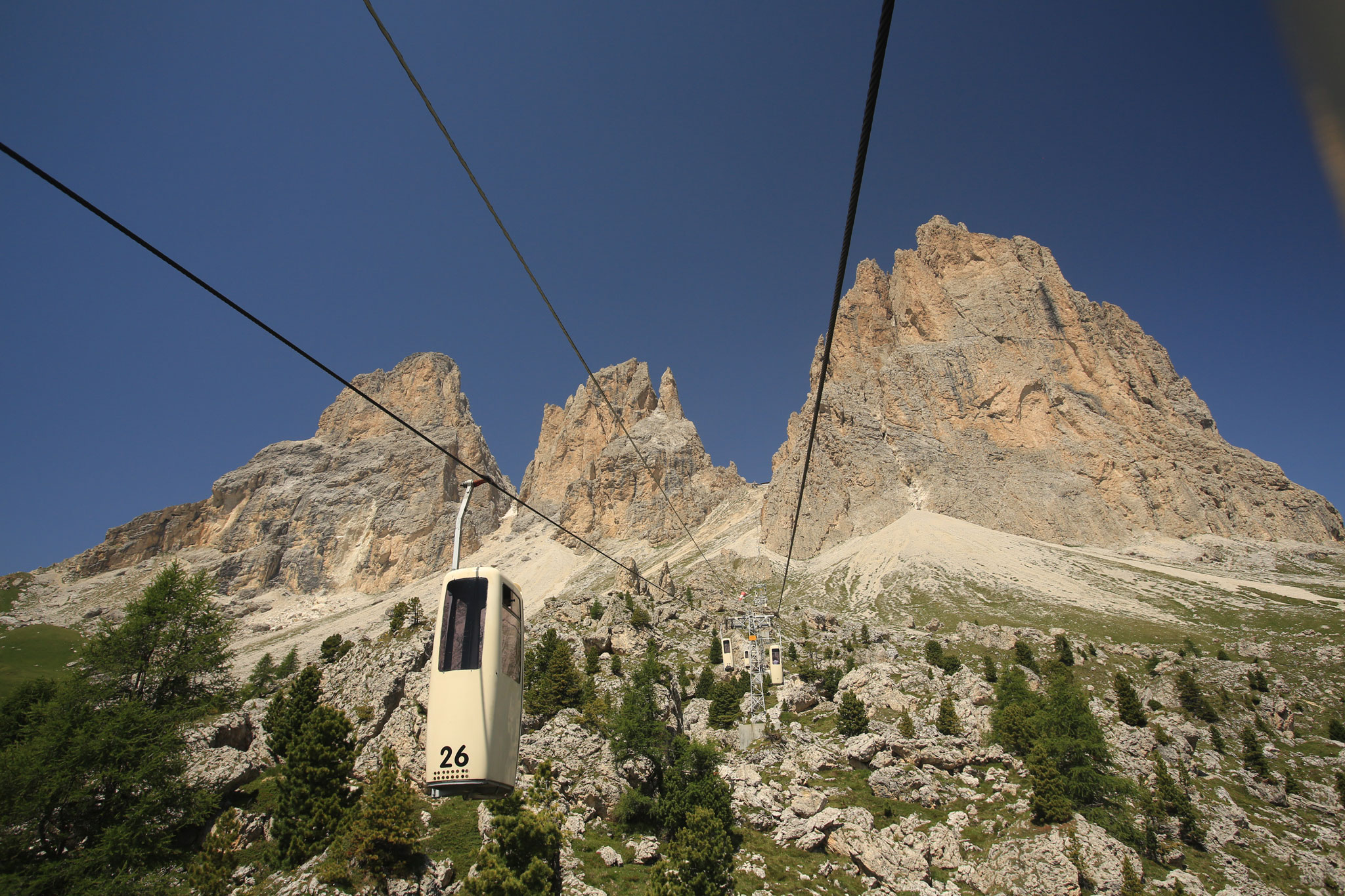
Our hikes took us from hut to high alpine hut along trails clearly marked. Some days, we reached five or more huts, each teeming with character, history and charm. The hundreds of years old mountain huts revealed handcarved wooden light fixtures and furnishings, bike mechanical stations for mountain bikers, swiveling patio sets that rotate with the sun, accordion players making music on the decks, local flavors on the menu and a seemingly endless supply of cold beer. We visited grandiose huts such as Comici and Bolzano and, in contrast, the tiny Malga Pieralongea Alm at 2,290 m (7513 ft) which had no electricity or running water in the hut. Food at this hut was prepared from a wood stove and free-range chickens followed the innkeeper in and out of the front door as he went to the well for water. The hikes were as diverse as the huts we visited in this divine area of South Tyrol.
Alas, our travels brought us to the iconic, if not exploited, cobblestoned town of Castelrotto/Kastelruth. It is here that we hiked along the Seiser Alm/Alpe di Siusi, the largest alpine meadow in all of the Alps. Setting out from this mountain village, we spent our days hiking and catching lifts high in the mountains. We enjoyed the views of the Schlern/Sciliar in the forefront with the Dolomite’s highest peak, the snow-capped 3,343 m (10967 ft) Marmolada in the distance. We met many four-legged friends along the trail including the lovely Tyrolese grey and brown Suisse cows, donkeys and South Tyrol’s majestic Haflinger horses.
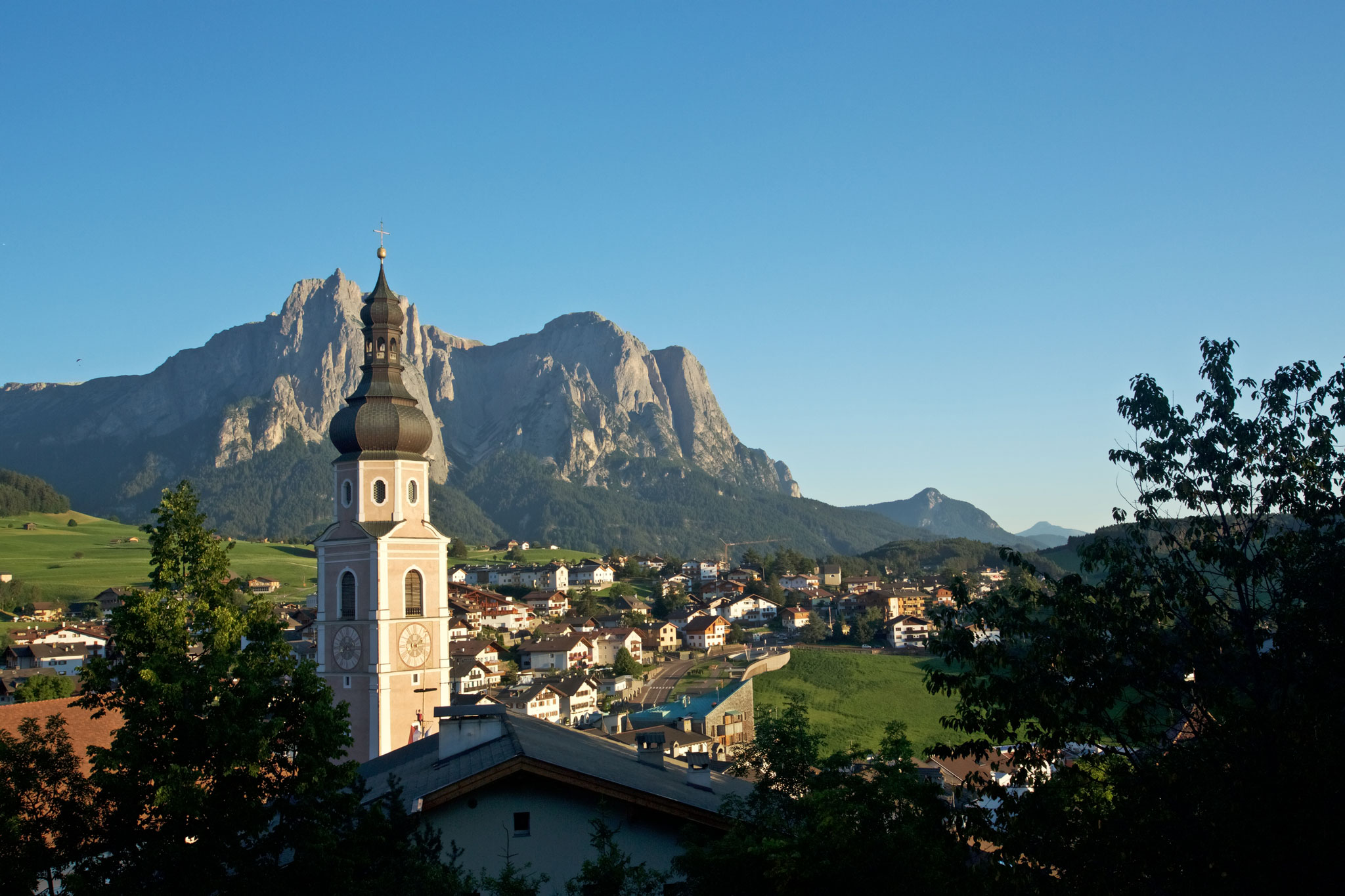
It was here that we encountered our only day of rain, which gave us license to ditch the trekking poles for a day’s excursion to the city of Bolzano/Bozen. Bolzano boasts a vibrant market, picturesque gothic architecture and the South Tyrol Museum of Archaeology. This museum is home to Ötzi the Ice Man, a 5,300-year-old man mummified by glacial ice and discovered by hikers in 1991. Ötzi lived in the Dolomites in the Copper Age and is older than the Egyptian Pyramids and Stonehenge. It was worth the wait in line at the museum to experience this fascinating exhibit.
On our last night in Castelrotto, we dutifully photographed the Viennese engineered Parish Church of Castelrotto, as any self-respecting tourist should. The church steeple was perfectly photogenic against the bold blue sky that evening. Behind the church, we found the cemetery where many who perished in WWI were laid to rest. The grounds at this village cemetery were immaculate; nearly every grave site had a fresh fl oral bouquet beside it. The grave sites were adorned with ornate and elaborate wrought iron crosses, and a painted mural by the mausoleum told the tale of lives lost in war while the names of the fallen soldiers were printed on the adjacent walls. It was the perfect place for quiet contemplation; we lingered, each feeling a deep sense of respect and gratitude.
Our final evening in Castelrotto came to an end with a joyful dinner of Italian pizza Margherita with the freshest mozzarella, basil and tomato you could imagine. We clinked glasses to toast an amazing adventure with cherished friends and family. Happy Trails! N
By Denise Lundy
Photography By David Ronalds
As Featured In: Winter/Spring 2017



